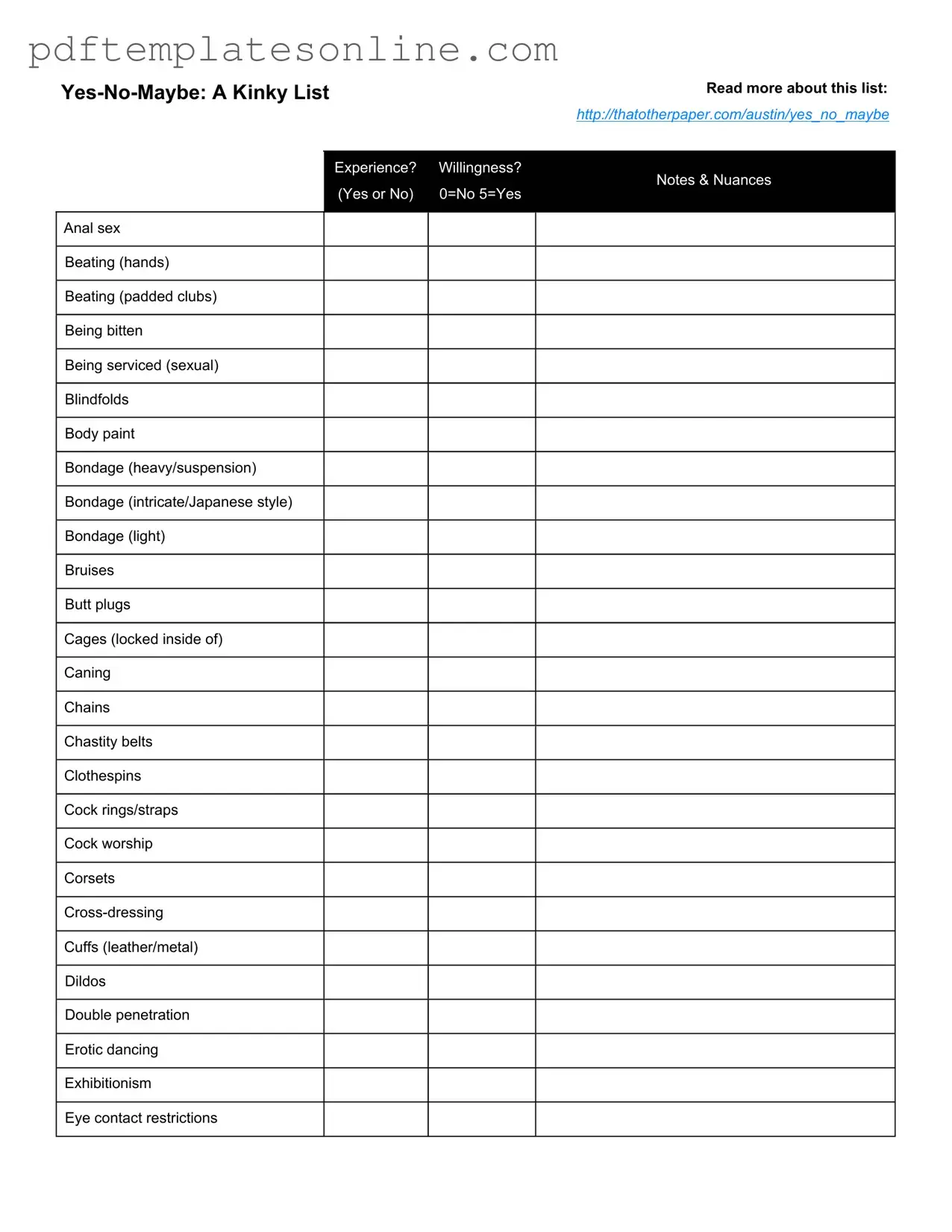Filling out the Yes No Maybe List form can be a straightforward process, but several common mistakes can lead to misunderstandings or incomplete submissions. One significant error is failing to read the instructions carefully. The form includes specific guidelines for rating experiences and willingness, but many individuals overlook these details. This oversight can result in misinterpretation of the scale, leading to inaccurate ratings.
Another frequent mistake involves not providing sufficient notes or nuances. While the form allows for a simple yes or no response, additional context can be essential for clarity. Without elaboration, the recipient may misinterpret the intent behind a rating. For example, someone might rate a particular activity as a "yes," but without notes, the reasons for that choice remain unclear.
People also tend to rush through the form, which can lead to skipped items. Each activity listed deserves consideration, and overlooking even one can create gaps in understanding preferences. Taking the time to thoughtfully evaluate each item ensures a comprehensive response.
Additionally, some individuals mistakenly believe that they must rate every item on the list. While it is encouraged to respond to as many activities as possible, it is acceptable to leave certain items blank if they are not relevant. This can help to focus on personal interests and boundaries without feeling pressured to provide a rating for everything.
Misunderstanding the rating scale is another common pitfall. The scale ranges from 0 to 5, where 0 indicates "no" and 5 indicates "yes." Some individuals may confuse the scale or misapply it, leading to a misrepresentation of their true feelings about specific activities.
Moreover, individuals sometimes fail to communicate their comfort levels accurately. The form is designed to facilitate open dialogue about preferences, but if someone feels uncomfortable disclosing certain aspects, they may give misleading ratings. Honesty is crucial for ensuring that all parties involved have a clear understanding of boundaries.
Lastly, neglecting to review the completed form before submission can result in errors that could have been easily corrected. A final check allows individuals to ensure that all responses accurately reflect their thoughts and feelings. Taking this extra step can prevent potential misunderstandings later on.
